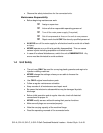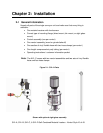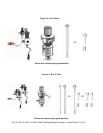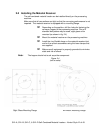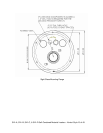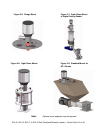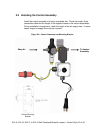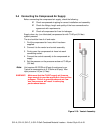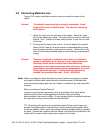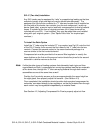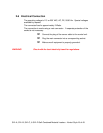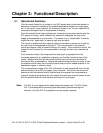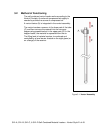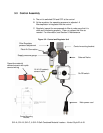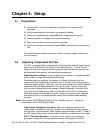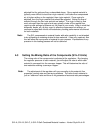SVL-A, SVL-B, SVL-C, & SVL-D Self-Contained Material Loaders - Venturi Style 17 of 49
2-5 Connecting Material Lines
Typical SVL Loader installations use flex hose to connect the loader to the
venturi.
Caution! The material hose should be as straight as possible. Avoid
loops and S-curves in flexible hose. This can hurt conveying
performance.
1. Attach flex hose over the inlet stub of the loader. Secure the hose
with the provided hose clamp. The hose should fit over the inlet stub
at least 1 inch. Position the hose clamp at least ¼ inch from the end
of the inlet.
2. Connect the flex hose to the venturi. From the loader to the venturi,
attach the flex hose in the same manner as described above, being
sure of proper orientation (note arrow on venturi). Reduce flex hose
down to the shortest possible length to avoid wasting compressed air
energy.
Caution! Flex hose is typically considered a wear item, so it should be
routed or secured in such a way as to make replacement easy.
Flex hose should not be routed close to electrical wires,
especially control signal wires since static electricity, commonly
generated by conveyed material can be discharged to the wires,
fouling electrical operation. If static electricity needs to be
avoided, use grounded flex hose. (Part # - A0565934)
Note: When connecting a vertical feed tube or wand:(used for conveying out of open-
top boxes) sufficient slack should be left to allow movement of the feed tube
when the material supply gets low, but “valleys” or droops in the hose should be
avoided.
When connecting a Grinder/Take-off:
(used for conveying from surge bins, silos or granulators) less slack will be
needed, but flex hose is still suggested to allow the hose to be easily
disconnected in the event of trouble. A hose clamp should be installed to prevent
the hose from coming unconnected from the feed tube.
TIP: Rigid tubing like aluminum and stainless steel will last much longer and
provide a straighter path for material flow, usually increasing the loader’s ability
to convey material. When used, rigid tubing should be coupled tightly to prevent
air leaks. It should be routed to minimize bends, and should be connected to the
loader with flex hose to allow quick disconnection of the loader.



